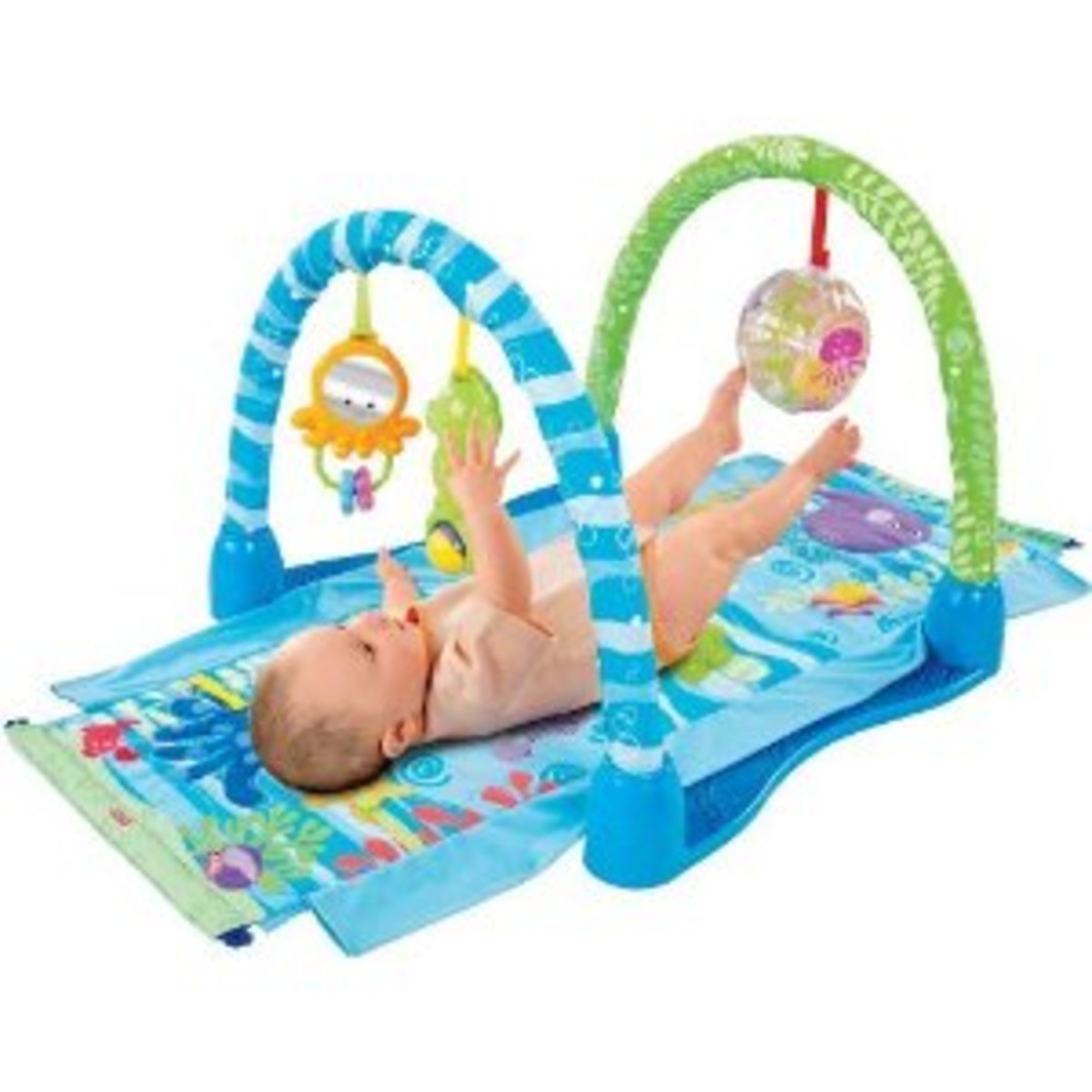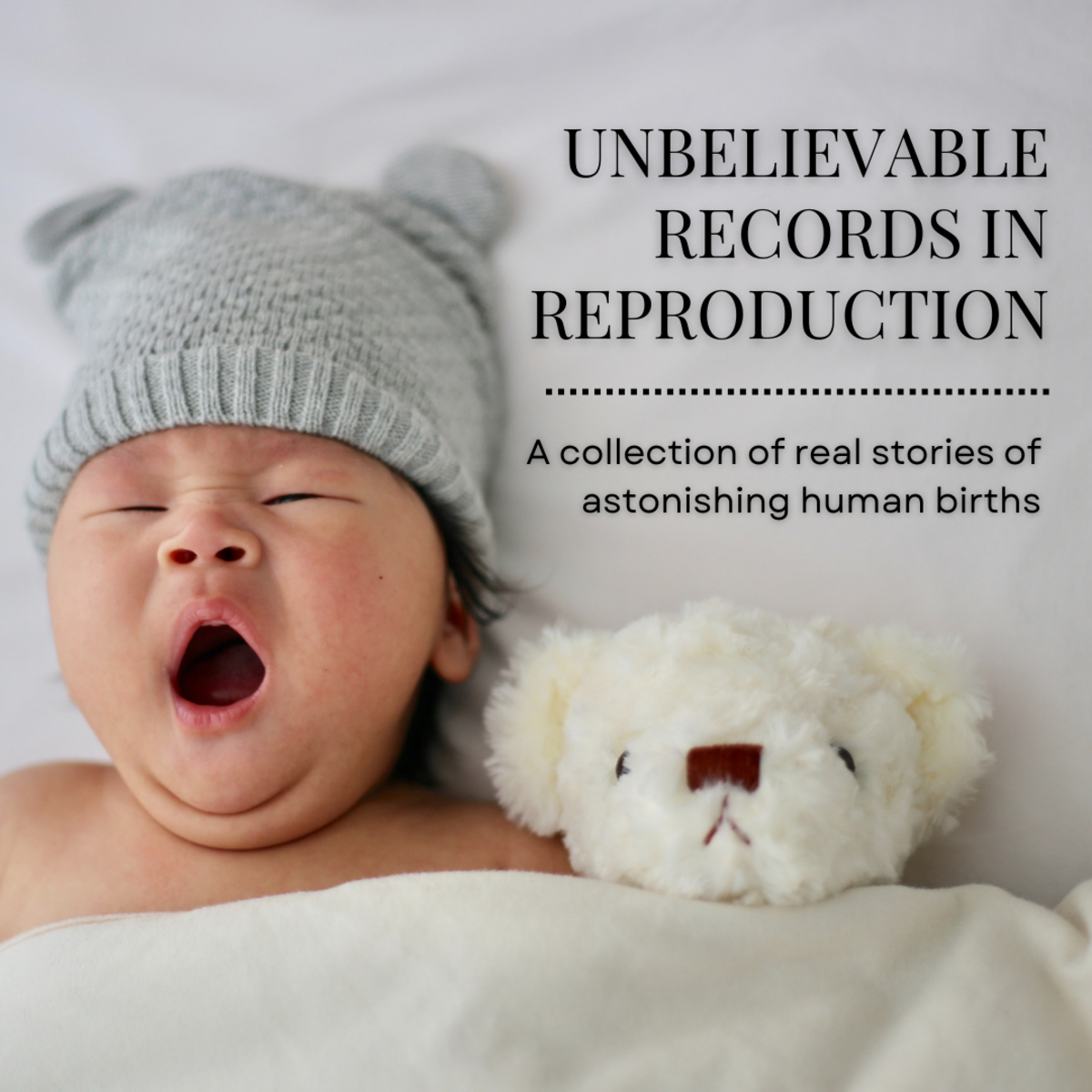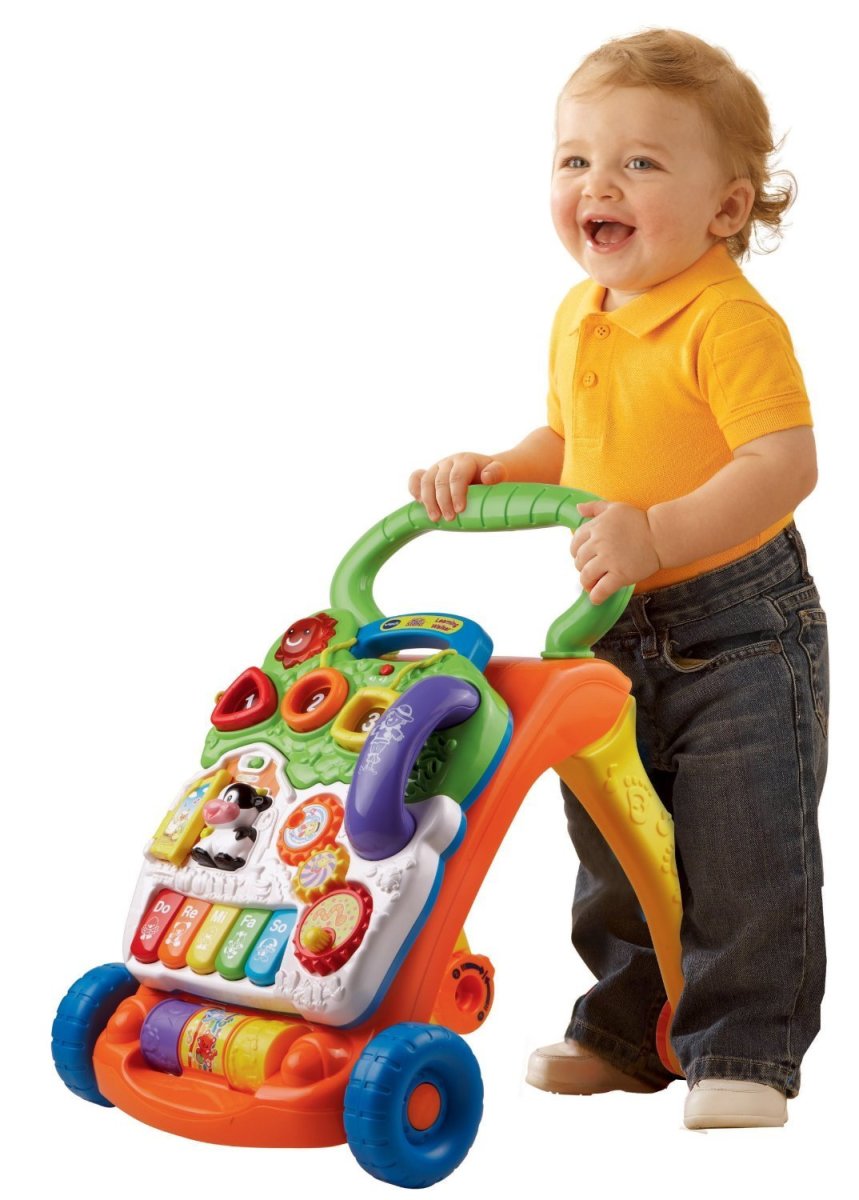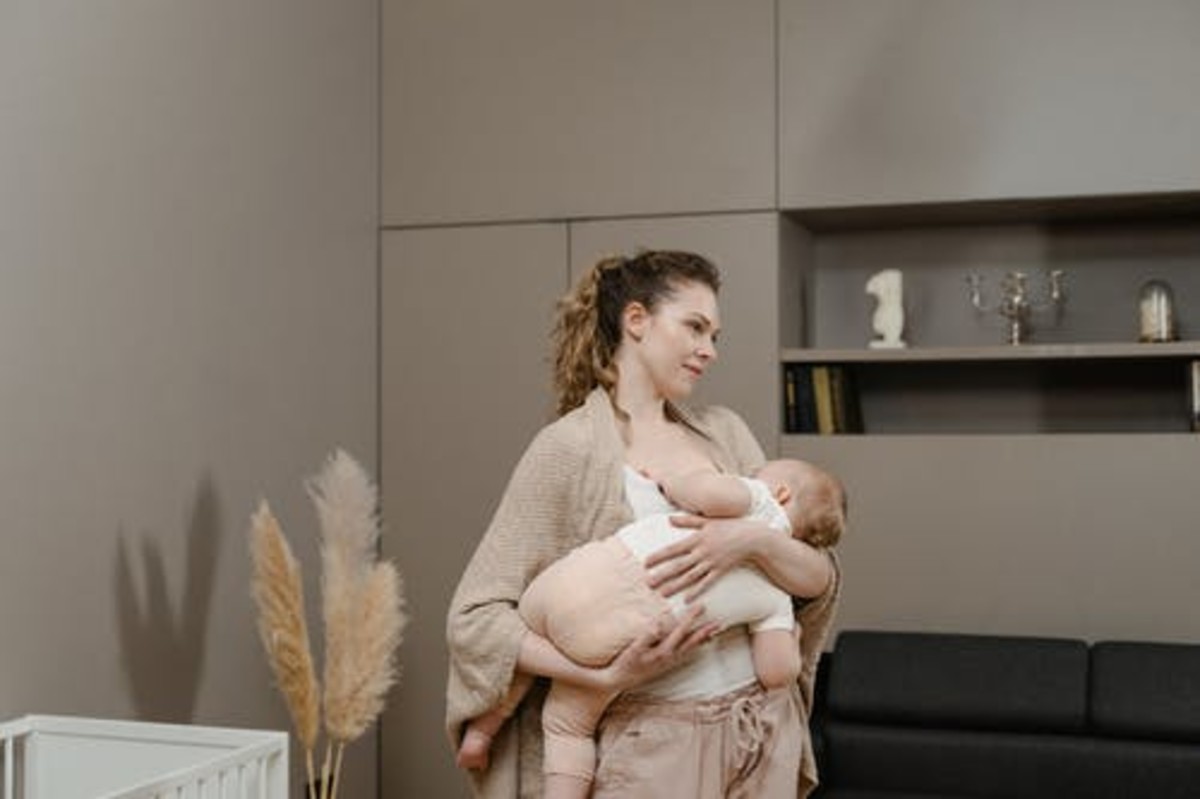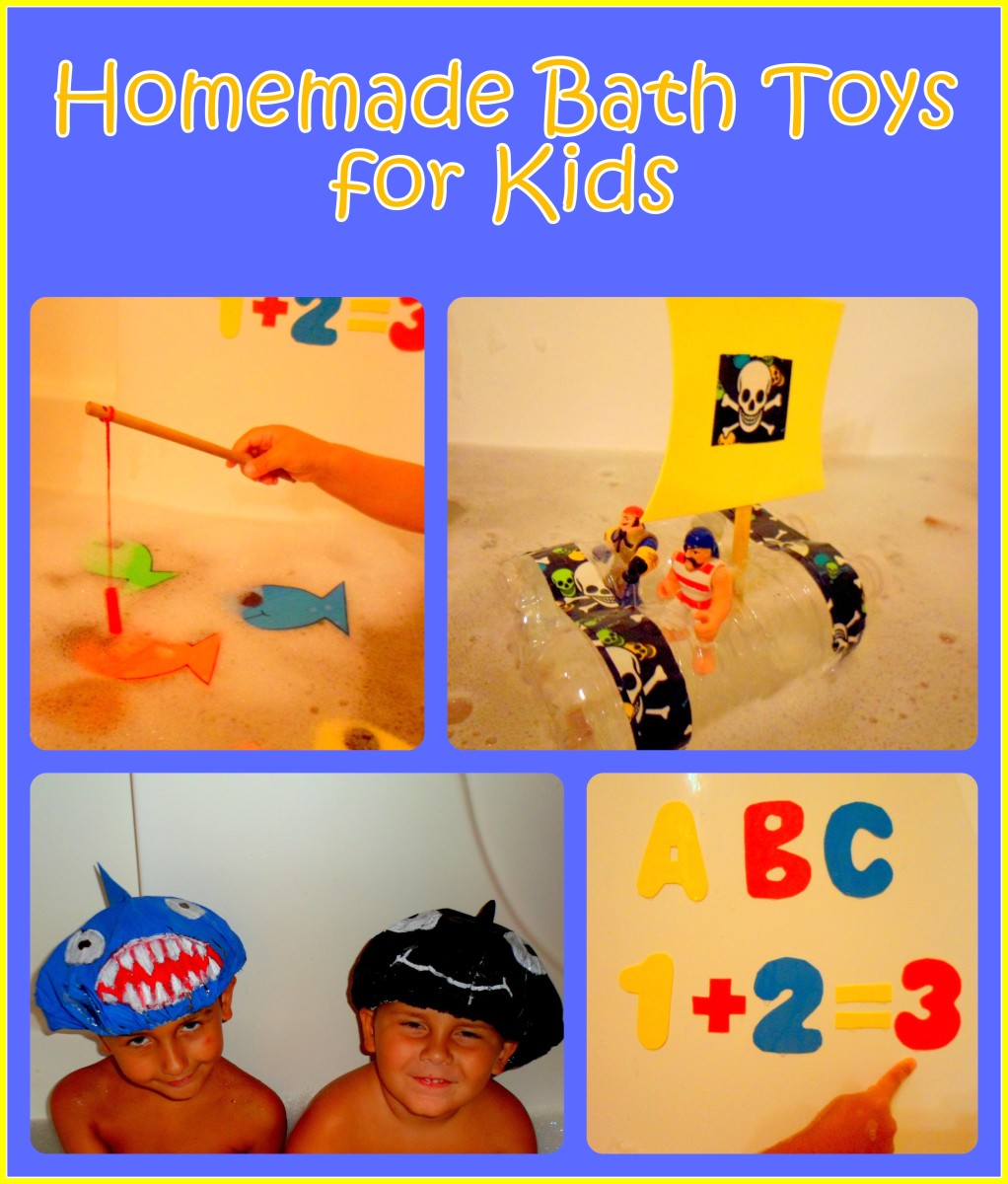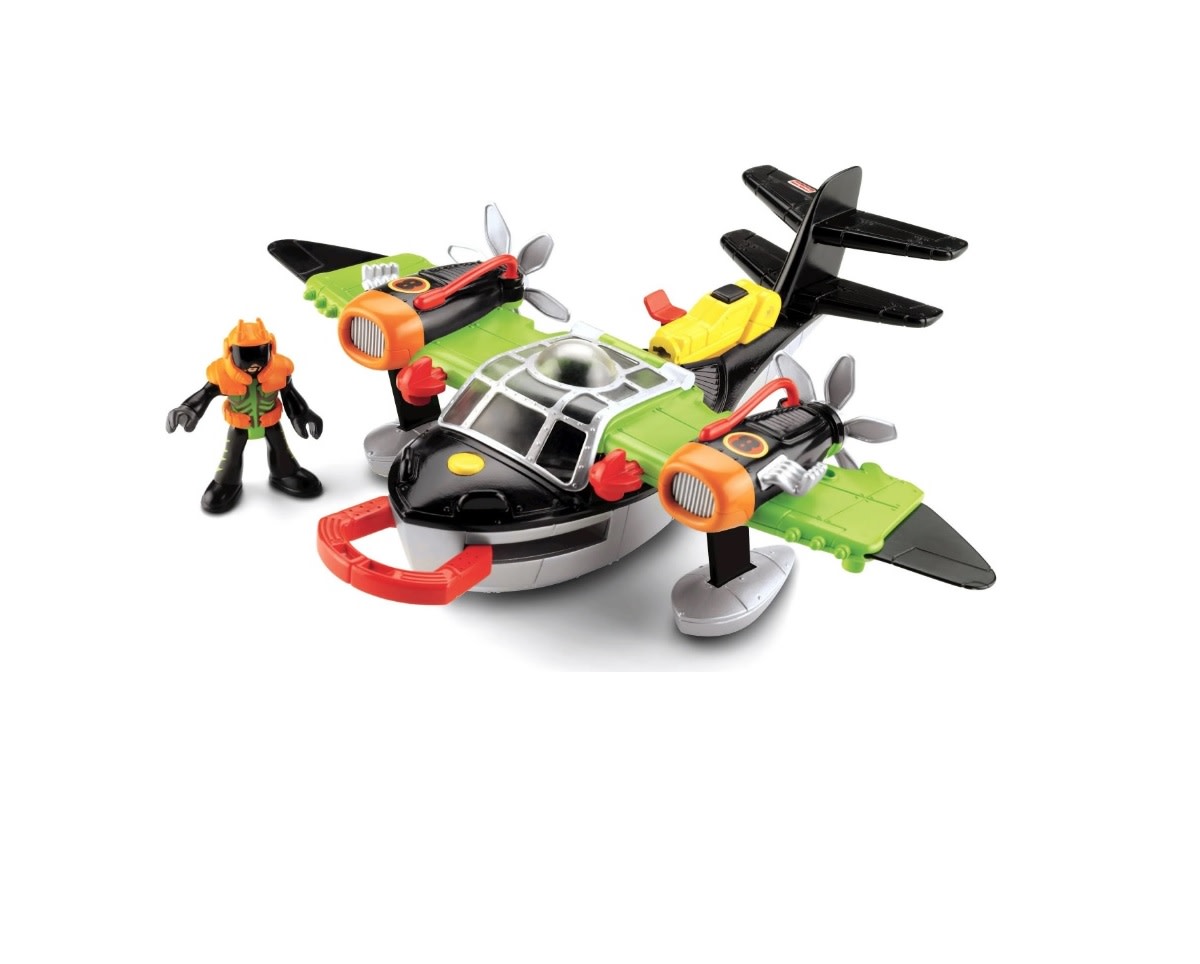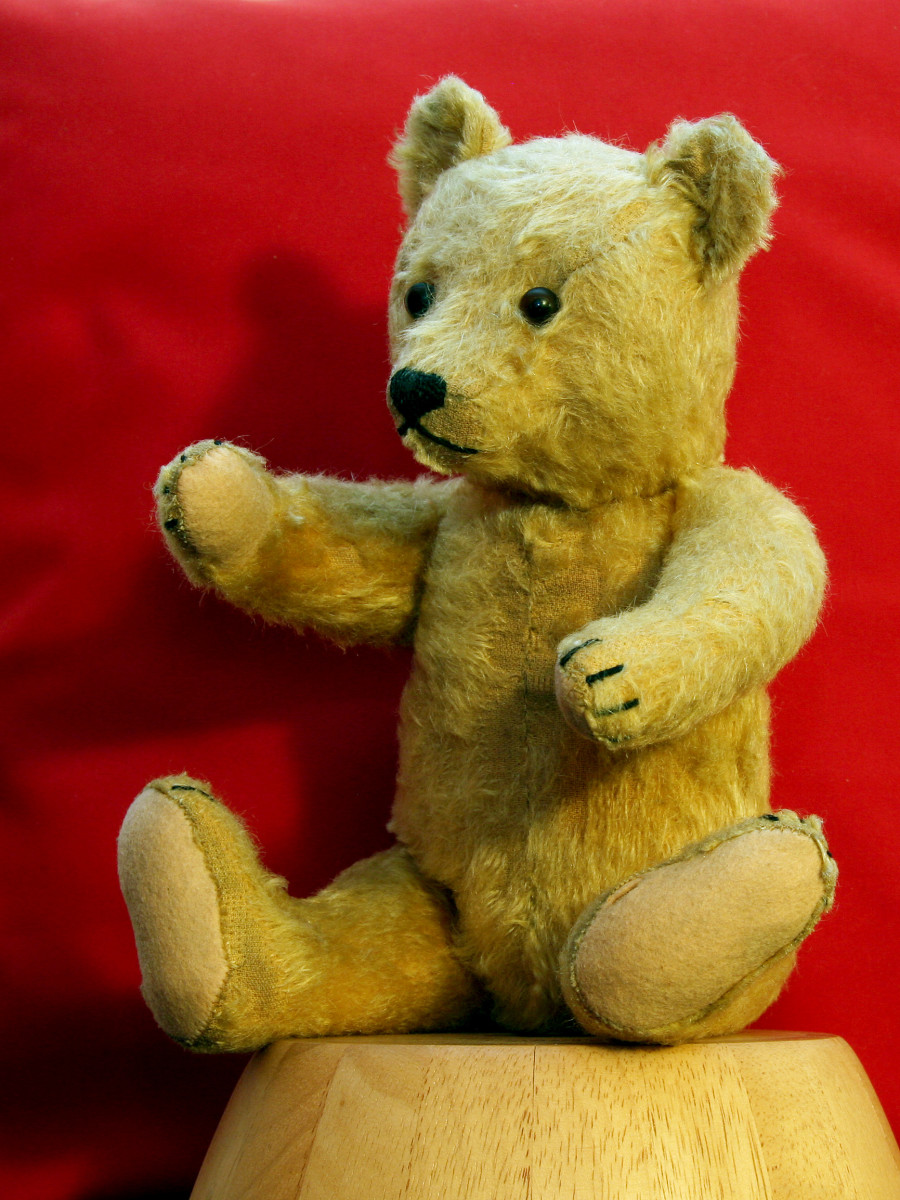Fun Baby Toys! My Favorites for 6-12 Month Olds
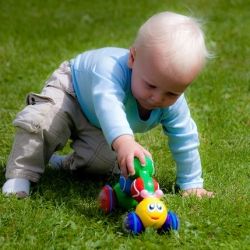
How to Find Fun, Developmentally Appropriate Toys for Babies 6-12 Months Old
I love seeing babies discover their worlds through play! Babies can have a blast with a plastic cup or banging on a pot, but it's always nice to have toys that help them learn a wider variety of skills.
Whether you're shopping for your grandchild, looking for a Christmas gift for your niece or nephew, or wanting a toy that helps your child learn best for her age and stage, you're bound to find an excellent selection for your 6-12 month old baby here. These baby toys have been banged on, pushed, rolled, dumped out, squeaked, and chewed on to the delight of many little ones who are gaining new ground in exploring their worlds.
To help your baby keep exploring, giggling, and trying out his newfound abilities, here's a guide to the best developmentally appropriate toys for 6 to 12 month olds, These toys consistently get high ranks with parents and children.
Between my daughter and her playgroup friends, my nieces and nephew and the children I've cared for in our church's nursery, I've gotten to see tons of baby toys in action and observe which ones are winners and which ones are duds.
Here's the criteria for what makes an excellent baby toy:
- It holds child's interest for a good amount of time (considering their attention span, of course)
- Lots of fun! It's enjoyable for babies to play with either alone or with their parents.
- Durable. It can stand up to what a baby can dish out. Quality construction is important.
- Age-Appropriate. The toy is a great match for the developmental stage a baby is in and helps develop key skills.
Hope you and the baby in your life have lots of fun learning and playing!
photo credit: http://www.flickr.com/photos/dagoaty/4857489151/
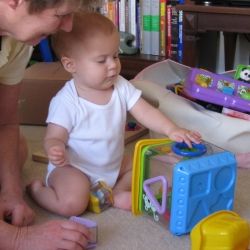
Amazing Changes in How Your Baby Plays During Months 6-12
From a lying down, stationary baby to a mobile explorer. Look out world, here comes baby!
What started out as batting wildly at toys and learning simple-cause-and-effect has blossomed into dozens of new avenues for play. While many babies have been rolling around by 6 months old, and some are sitting without support or even beginning to crawl, the next six months is definitely the fast track to full mobility.
With the new skill of being able to sit upright, first with a pillow or hand to steady her and then all on her own, your baby has her hands free to manipulate objects in her hands even more. And, without the straps of a swing or carseat around him, he'll explore how far he can reach, lean and grab. It's hard to predict when a baby will take his first roll, scoot, belly crawl or more traditional crawl towards all the immensely interesting objects and people in his world, but self-movement is pretty delightful for baby. He can follow toys that roll away, and move from activity to activity with less help from mom or dad.
Around nine months or so, many babies discover the delights of standing up. Granted, the first 'stands' are usually with help from a parent or older sibling, but soon your little one figures out how to pull himself up with the help of a nearby table, toy or whatever is nearby. Activity tables, or just an intriguing item on a coffee table can be a huge motivation for a soon-to-be-toddler to try to stand or cruise along, holding onto the edges of couches and tables to reach his goal.
Your baby's visual capabilities have also grown to where by around 9 months he can focus well on people and objects on the other side of the room, but he still won't be able to see them as clearly as what he's holding in his hand. He'll be interested in a wider variety of shapes and colors, and learns a lot by what he sees around him. At the same time, baby's fine motor skills are progressing from a mitten-like grip to being able to have a more precise pincer-like grip using just a thumb and forefinger. While it's still not a good idea to give babies items (besides appropriate foods) that are small enough to be a choking hazard, you'll be able to see your child pick up objects as small as a Cheerio with much more ease.
What fun for a baby to investigate toys with their newfound hand and finger skills! Babies in the second half of their first year start being able to pass toys from one hand to the other and smack two toys together. Most everything in baby's reach will be poked, shaken, rubbed and of course, investigated with his mouth whenever possible.
This is also the age where your child will learn object permanence. Now if you hide a toy under his blanket, your baby will be able to keep the idea of it in his mind long enough to look for it or pull the blanket off to reveal the toy....much to his delight. It's a great age for peekaboo!
photo credit: BunnyFabulous It's my little girlie at 7 months old playing with her Grammy. :)
Moving Toys - Your baby is on the move, so it's no surprise that she's interested in other things that go. Help her learn how to push a little car herself, or

While toys are really fun, remember YOU are your baby's favorite plaything. Why not enjoy the fun together?
Wooden or Soft Blocks - Pile a few blocks for baby, and she'll have a ball knocking them down. As her coordination develops, she'll find the delight of stacking

So Much Fun With Blocks!
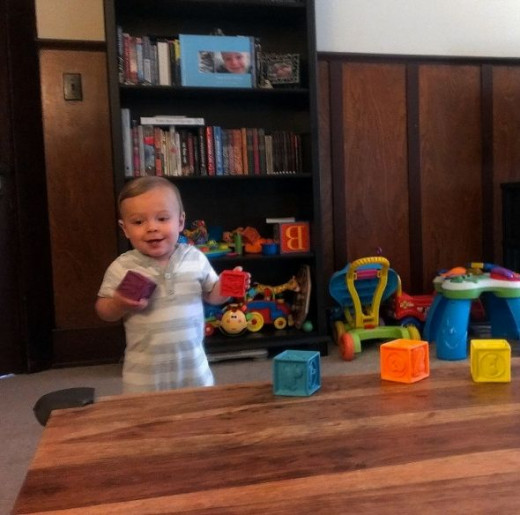
photo credit: http://www.flickr.com/photos/seanfreese/7869785586/
Busy Board / Play Table / Music Table - 6-12 month olds are making the connection between their actions and sensory experiences. Toys that offer things to spin,
Extra bonus: These are toys that can grow with your baby. Toddlers continue to be fascinated with play tables, and they're a main attraction for other small children who come over for a visit.

Playing with the LeapFrog Learn and Groove Musical Table - This little guy's fascinated with even just one corner of his musical table.
Many parents report that their kids keep playing with this toy well into toddlerhood.
My favorite interactive book - It's really easy to encourage babies to play along with this cute little finger puppet book

My daughter at 8 months reading with her grandma. It's never too early to start reading to your children or grandchildren.
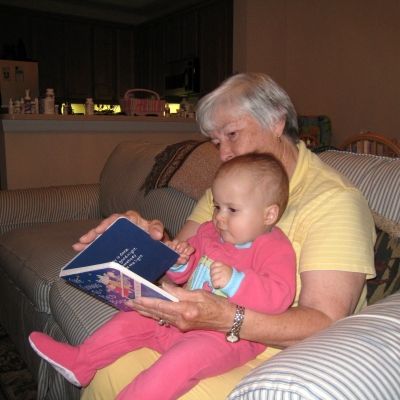

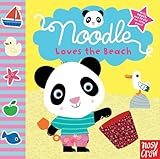
Soft Dolls and Stuffed Animals - This is an age where children tend to form attachments to cuddly objects. Not all babies have a favorite snuggly toy or 'lovey,
In any case, make sure your baby's soft toys don't have any parts that can be gummed or gnawed off like buttons or small parts, and don't have long strings that can possibly entangle or choke your child.
Note on Soft Toys for Sleep Time: My personal opinion is that any small blanket or toy that your child could potentially sleep with shouldn't have any noise that could encourage wakefulness. Ask your pediatrician at what age he/she deems this safe and appropriate. My daughter received a bunny blanket with a rattle as a gift, and she'd just shake it at naptime. Not so conducive to sleep. We switched it out for another one without any noisemakers that she fortunately liked even better.
If your child gets too frustrated with learning a new skill, back off and let him try again later. Occasionally, I put the frustrating toy away for a period of time (days, weeks, months) and then brought it out again. Often, her interest was heightened in the toy since it was 'new' again, and she was more ready to learn by playing with it.
Balls - Six to Nine month olds enjoy rolling balls and scooting along after them, and as your baby gets older, balls get even more fun. The higher up you can st
There are quite the variety of balls out there; from the edushape balls with their tactile nubs to see-through balls that have fascinating shapes inside, to ball pits filled with just plain old balls. I've put together the most highly rated collection of balls in some of these major categories, but whichever ball you choose, make sure it's large enough not to be a choking hazard. Avoid squishy 'nerf' balls too; babies can chew off dangerously small pieces.

Shape Sorters - A shape sorter is a perfect toy for a budding problem-solver. While kids on the younger end of the 6-12 month spectrum will still love containe
For most children nearing their first birthday, shape sorters are a fun and positive challenge; at least most of the time. Everyone (including your baby) can get a bit frustrated when learning something new. If your baby gets too frustrated with learning a new skill, back off and let him try again later.

Near the end of this age range, your child might be ready for a walker - My daughter started walking at 13 months (the average age), but many kids can push some
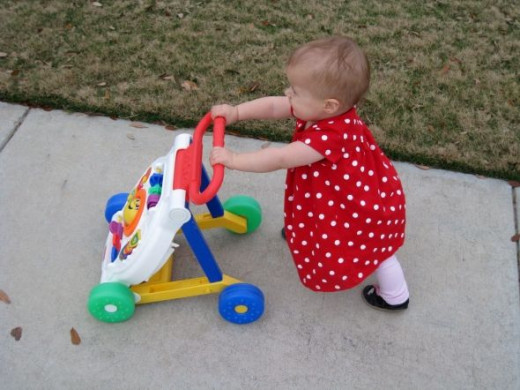
The model of walking/push toy that she's using is really old and wasn't quite as fun as a lot of the activity boards out now. The one reviewed below is what I would have loved to have gotten for my little girl.
photo credit: BunnyFabulous

